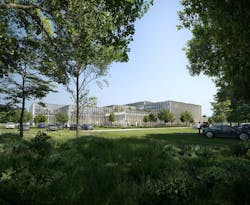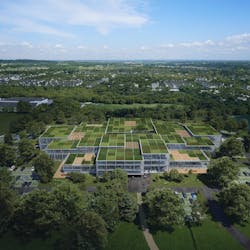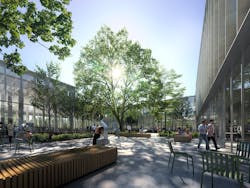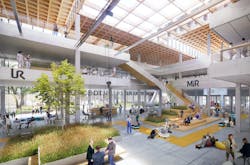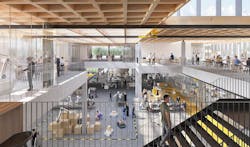New hub for Danish robot developers unveiled
3XN has unveiled the new joint home of Universal Robots (UR) and Mobile Industrial Robots (MiR) in Odense, Denmark. The 215,000-sf project will enhance collaboration and employee well-being while offering highly specialized environments for robot research and development.
The new facility will group most of UR and MiR’s activities, which are currently spread across five different addresses in Odense, in one location, creating the world’s largest hub for cobots (collaborative robots that work and interact with humans).
Dubbed Cobot Hub, the facility comprises flexible modules tailored to the robotics companies’ specialized needs. "We have worked closely with the users of the building since the beginning of the process, and we have conducted many interviews to outline what the new building needs to deliver," said Audun Opdal, Architect and Senior Partner, 3XN, in a release. "A lot of different elements had to come together. The new building will house two independent companies that need everything from traditional office space to workshops, laboratories, and creative robot ‘playrooms,’ where the robots of the future are developed.”
The building’s modular approach provides a flexible framework that allows the building to be scaled up or down according to future needs. This means significant parts of the building’s structure and materials can be reshaped and reused.
Cobot Hub will include a green roof, open office landscapes, common areas, and amenity spaces where employees can meet informally across the two organizations and exchange knowledge and innovations. Atriums open the building up and create visibility and transparency, encouraging social interaction. A shared courtyard forms the heart of Cobot Hub and will become the center of social life on the campus.
The project is slated for completion in 2023.
